Related Research Articles
William Boyd Watterson II is a retired American cartoonist and the author of the comic strip Calvin and Hobbes, which was syndicated from 1985 to 1995. Watterson stopped drawing Calvin and Hobbes at the end of 1995, with a short statement to newspaper editors and his readers that he felt he had achieved all he could in the medium. Watterson is known for his negative views on comic syndication and licensing, his efforts to expand and elevate the newspaper comic as an art form, and his move back into private life after he stopped drawing Calvin and Hobbes. Watterson was born in Washington, D.C., and grew up in Chagrin Falls, Ohio. The suburban Midwestern United States setting of Ohio was part of the inspiration for Calvin and Hobbes.

A comic strip is a sequence of drawings, often cartoons, arranged in interrelated panels to display brief humor or form a narrative, often serialized, with text in balloons and captions. Traditionally, throughout the 20th and into the 21st century, these have been published in newspapers and magazines, with daily horizontal strips printed in black-and-white in newspapers, while Sunday papers offered longer sequences in special color comics sections. With the advent of the internet, online comic strips began to appear as webcomics.

A cartoon is a type of visual art that is typically drawn, frequently animated, in an unrealistic or semi-realistic style. The specific meaning has evolved over time, but the modern usage usually refers to either: an image or series of images intended for satire, caricature, or humor; or a motion picture that relies on a sequence of illustrations for its animation. Someone who creates cartoons in the first sense is called a cartoonist, and in the second sense they are usually called an animator.

Sergio Aragonés Domenech is a Spanish/Mexican cartoonist and writer best known for his contributions to Mad magazine and creating the comic book Groo the Wanderer.
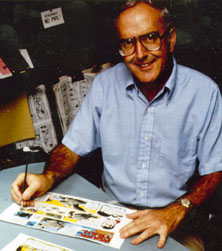
A cartoonist is a visual artist who specializes in both drawing and writing cartoons or comics. Cartoonists differ from comic writers, comic book artists, or comic book illustrators in that they produce both the literary and graphic components of the work as part of their practice. Cartoonists may work in a variety of formats, including booklets, comic strips, comic books, editorial cartoons, graphic novels, manuals, gag cartoons, storyboards, posters, shirts, books, advertisements, greeting cards, magazines, newspapers, webcomics, and video game packaging.
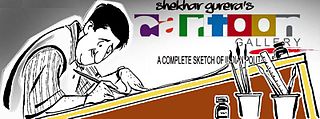
An editorial cartoonist, also known as a political cartoonist, is an artist who draws editorial cartoons that contain some level of political or social commentary. Their cartoons are used to convey and question an aspect of daily news or current affairs in a national or international context. Political cartoonists generally adopt a caricaturist style of drawing, to capture the likeness of a politician or subject. They may also employ humor or satire to ridicule an individual or group, emphasize their point of view or comment on a particular event.
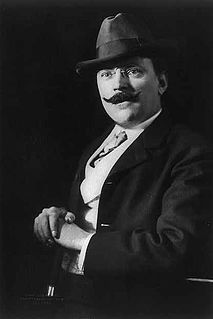
Richard Felton Outcault was an American cartoonist. He was the creator of the series The Yellow Kid and Buster Brown and is considered a key pioneer of the modern comic strip.

The Family Circus is a syndicated comic strip created by cartoonist Bil Keane and, since Bil's death in 2011, is currently written, inked, and rendered (colored) by his son, Jeff Keane. The strip generally uses a single captioned panel with a round border, hence the original name of the series, which was changed following objections from the magazine Family Circle. The series debuted on February 29, 1960, and has been in continuous production ever since. According to publisher King Features Syndicate, it is the most widely syndicated cartoon panel in the world, appearing in 1,500 newspapers. Compilations of Family Circus comic strips have sold over 13 million copies worldwide.

They'll Do It Every Time is a single-panel newspaper comic strip, created by Jimmy Hatlo, which had a long run over eight decades, first appearing on February 5, 1929, and continuing until February 3, 2008. The title of the strip became a popular catchphrase.
The comic strip switcheroo was a massive practical joke in which several comic strip writers and artists (cartoonists), without the foreknowledge of their editors, traded strips for a day on April Fools' Day 1997. The Switcheroo was masterminded by comic strip creators Rick Kirkman and Jerry Scott, creators of the Baby Blues daily newspaper comic strip.

Frank Oscar King was an American cartoonist best known for his comic strip Gasoline Alley. In addition to innovations with color and page design, King introduced real-time continuity in comic strips by showing his characters aging over generations.

A panel is an individual frame, or single drawing, in the multiple-panel sequence of a comic strip or comic book. A panel consists of a single drawing depicting a frozen moment. When multiple panels are present, they are often, though not always, separated by a short amount of space called a gutter.

Sherrill David Robinson, known as Jerry Robinson, was an American comic book artist known for his work on DC Comics' Batman line of comics during the 1940s. He is best known as the co-creator of Robin and the Joker and for his work on behalf of creators' rights.
Robert Thaves was the creator of the comic strip Frank and Ernest, which began in 1972.
Ballard Street was an American comic panel created by Jerry Van Amerongen and distributed by Creators Syndicate that ran between 1991 and 2019.

Australian comics have been published since 1908 and Australian comics creators have gone to produce influential work in the global comics industry,
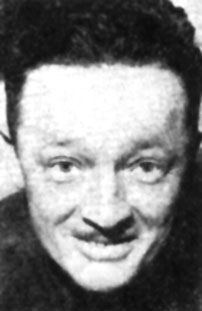
Merrill Blosser was an American cartoonist, the creator of the comic strip Freckles and His Friends, which had a long run (1915–1971). Although his strip was set in the small town of Shadyside, it was obviously based on Blosser's hometown of Nappanee, Indiana, since Blosser often referenced real Nappanee locations, such as Johnson's Drug Store. Six successful cartoonists lived in Nappanee as children, including Fred Neher and Bill Holman.

Irving Walter Phillips was a noted American cartoonist, playwright, television scriptwriter, author, illustrator and educator. He is best remembered for his daily newspaper comic panel The Strange World of Mr. Mum.
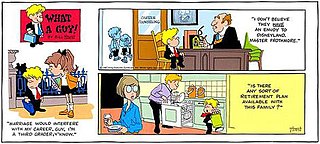
What a Guy! is an American comic strip created by Bill Hoest and Bunny Hoest, the team responsible for The Lockhorns and Agatha Crumm. It began in March 1987, just over a year before Hoest's death in 1988.
Comics has developed specialized terminology. Some several attempts have been made to formalize and define the terminology of comics by authors such as Will Eisner, Scott McCloud, R. C. Harvey and Dylan Horrocks. Much of the terminology in English is under dispute, so this page will list and describe the most common terms used in comics.
References
- ↑ "Jerry Van Amerongen". Lambiek . Retrieved 21 June 2010.